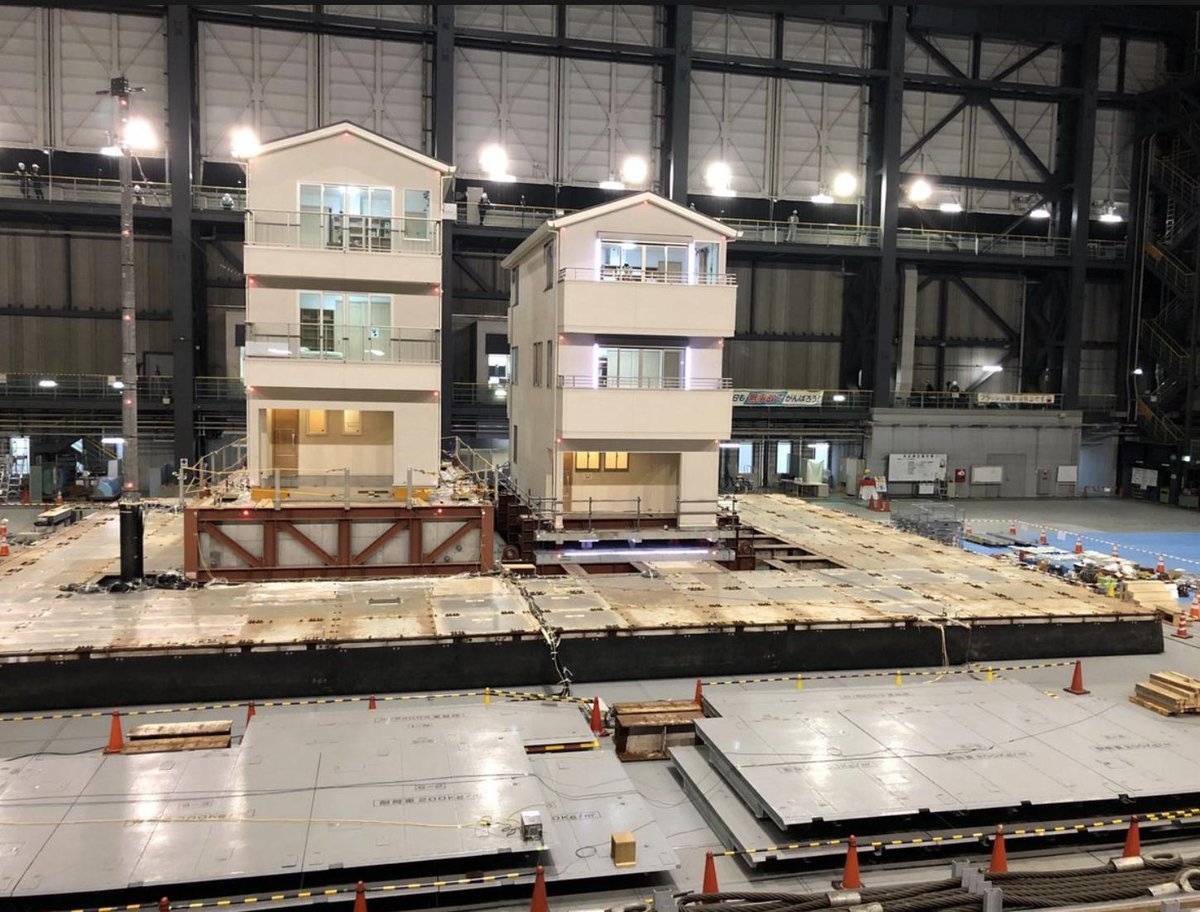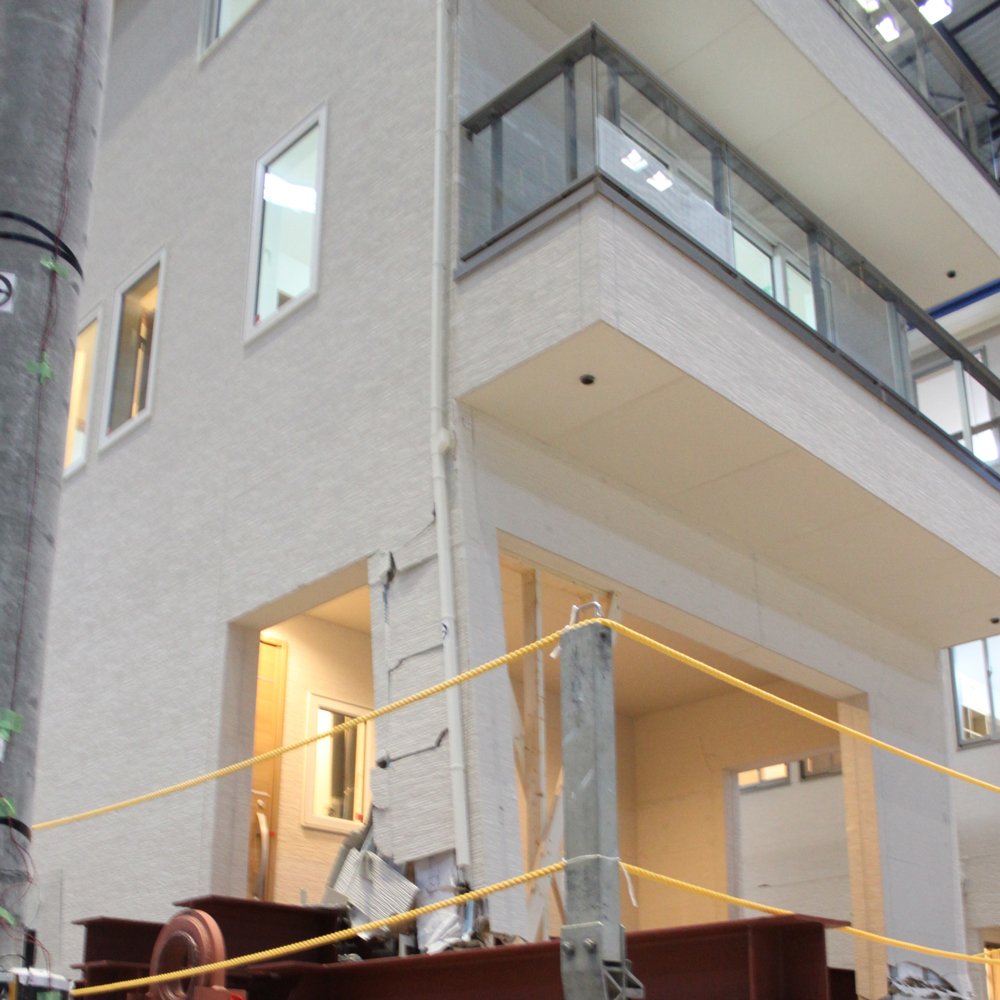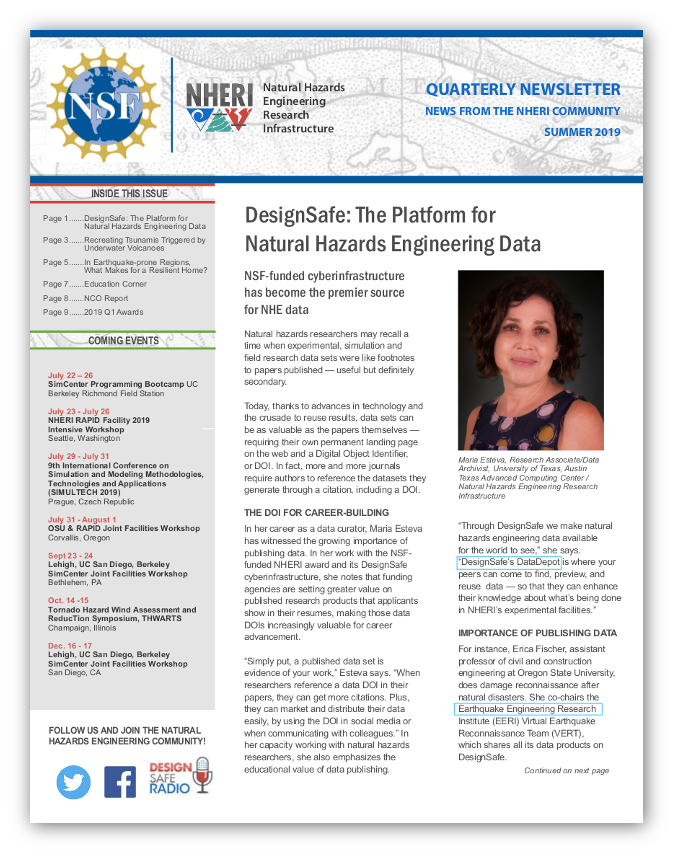In Earthquake-Prone Regions, What Makes for a Resilient Home?
Published on July 15, 2019

Maria Kiliou
Assistant Professor
Zachry Department of Civil and Environmental Engineering
Texas A&M University
American and Japanese earthquake engineers perform full-scale shake tests on multi-story, wood-frame buildings
Earthquakes are a defining force of nature in places like Japan and the West Coast of the United States. Earthquake engineers not only want to prevent billions of dollars in property- damage; they want to ensure residents in earthquake-stricken regions can return to their homes as quickly as possible.
With residential resilience in mind, a team of NSF-funded researchers participated in shake table experiments on two full-scale wood-framed buildings at the worlds largest shake table, E-Defense, in Miki, Japan. Team leader for the U.S., Maria Koliou, assistant professor in the Zachry Department of Civil and Environmental Engineering at Texas A&M University, says that the resulting data provides new insights about building and repairing such structures with the goal of swift residential reoccupation.
This research provides a unique set of data on the performance of wood-frame structures and non-structural elements within them under strong earthquakes. We used the advanced monitoring equipment from the NHERI RAPID facility at the University of Washington within a well-controlled laboratory environment, Koliou says. This allowed us to identify damage patterns, perform measurements, and see how damage occurs and propagates in these structures.
SHAKE TESTS AT E-DEFENSE
The researchers performed shake tests on two wood-frame buildings under varying conditions to the respective foundations: one on a base isolation system and the other on a fixed foundation. The latter was equipped with a soil box, which simulated soil-structure-interaction effects of earthquakes. The soil box also allowed researchers to see the interaction of non- structural components, such as pipes, during earthquakes. In homes without resilient lifeline utilities, residents are unable to move back into their homes even if the structure has minimal structural damage.

At Japans E-Defense facility, the experimental wood-frame structure on the left rests on a standard foundation, in a soil-box; the structure on the right rests on a base-isolation system. This video of a simulated earthquake reveals a significant difference in seismic performance: https://vimeo.com/330801828. Note the damage to non-structural elements. (Video: Texas A&M)

Structural and non-structural damage to a wood-frame structure. (Photo: Maria Koliou)
KEY DATA GLEANED
The preliminary data from these tests has provided insight into how wood-frame structures perform during an earthquake and can be used as a foundation for key actions.
One is the verification and validation of existing analytical models related to the seismic response and retrofit of wood- frame buildings.
The data also will inform a post-earthquake functionality-and-recovery framework based on damage assessment and homeowner decision-making choices, such as seismic retrofits, including variables such repair times and repair costs.
With the tests now complete, the team plans to host an expert panel that includes collaborators from Japan and leading experts from the U.S. from a variety of technical areas.
This panel will help us identify similarities of damage patterns and structural performance between the U.S. and Japanese structures for wood residential construction, Koliou says.
We are interested in identifying how similar the construction and damage would be in the U.S. urban environment. We also want to identify restoration times and associated costs for resilience-assessment studies.
PROJECT IMPACT
By studying the seismic performance and system interdependencies for wood- frame buildings, and restoration/retrofit interdependencies and efficiency, this study will help policymakers in the United States, Japan and other countries to establish methods and processes to integrate resilience into their infrastructure planning and strategic investment efforts for urban residential areas.
The work is a collaborative effort between Japans National Research Institute for Earth Science and Disaster Resilience (NIED) and the National Science Foundation (NSF). Kolious Rapid Response research project is part of the NSF-funded Natural Hazards Engineering Research Infrastructure (NHERI).
Award Abstract #1829433 and #1829412
RAPID/Collaborative Research: Japan-U.S. Collaboration on the Seismic Resilience of Wood-frame Building Systems






